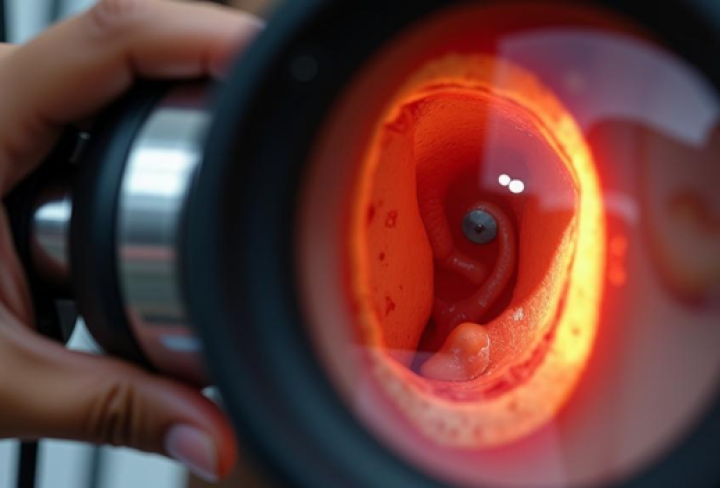Keeping our ears healthy is very important, and otoscopy plays a big role in that. An otoscopy procedure involves looking inside the ear to check its health. This blog will guide you through what otoscopy is all about, why it matters, and what you need to know before having this exam. Whether you’re curious or preparing for a visit to the doctor, this piece will make you feel more informed and less anxious about the process.
Understanding Otoscopy
Otoscopy is a simple ear examination to take a close look inside the ear canal and the eardrum. The main purpose of an otoscopy procedure is to ensure that your ears are healthy and not facing issues like infections. During an otoscopy, doctors use a gadget called an otoscope. This tool includes a light source, a magnifying lens, and a small tube called a speculum to look into your ear. There are different kinds of otoscopes, such as traditional ones, video otoscopes that show images on a screen, and head-worn versions that doctors can wear like headgear.
The Importance of Otoscopy and Its Role in Ear Health
Otoscopy helps find ear problems early on, like hearing loss, infections, or wax blockages. In many places like India, ear health issues can be pretty common because of environmental factors. Recognizing such issues early can greatly improve one’s quality of life. Healthy ears help with better hearing, which is vital for communication and daily tasks. So, regularly checking ear health with otoscopy ensures your ears are in tip-top shape.
Conducting an Otoscopic Examination: What to Expect
Undergoing an otoscopy procedure is typically very straightforward. Here’s what usually happens:
1. Preparation: You’ll be seated comfortably.
2. The Otoscope: The doctor gently inserts the speculum part of the otoscope into your ear canal.
3. Inside Views: The doctor will look inside using the light to see the ear canal and eardrum.
4. Observation: The doctor checks for anything unusual like wax or redness.
Sometimes people might stress about the exam. But it’s usually quick and painless, providing crucial insights into your ear health.
Common Findings in Otoscopic Examinations
During an examination, doctors often see:
- A healthy, pearly-gray eardrum that is not inflamed.
- A clear ear canal with some earwax being normal.
- Potential issues can include wax buildup, which can be easily removed, redness indicating infection, or fluid which might suggest middle ear problems.
Spotting these issues early with an otoscopy procedure is essential because it makes treatment easier and quicker.
Otoscopy for Children: Ensuring Healthy Development
Otoscopy is very important for kids too. Children have different ear needs compared to adults, and regular checks help ensure they grow up with good hearing health. Pediatric otoscopy considers their smaller, delicate ear structures. Regular exams are crucial because they ensure that any issues are caught early, supporting normal hearing development which is key for learning and communication.
Steps to Prepare for an Otoscopic Examination
Preparing for an otoscopy procedure is simple:
- Clean your ears gently with a damp cloth, avoiding objects inside the ear.
- List any symptoms or ear issues you’ve experienced to discuss with your doctor.
- Keep track of regular ear checks, as they play a part in overall wellness.
Maintaining ear health by avoiding loud noises, keeping ears dry, and regular check-ups promotes not only ear health but enhances general well-being by eliminating unwanted discomforts.
In conclusion, otoscopy is a critical and simple way to keep check on the health of our ears. With routine examination, we ensure early detection of potential ear problems, which can improve day-to-day functioning and overall life quality.



